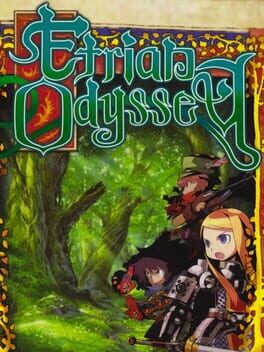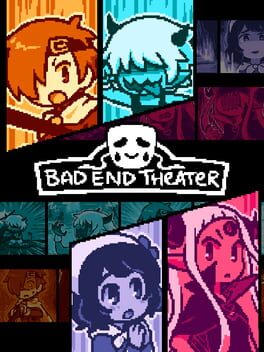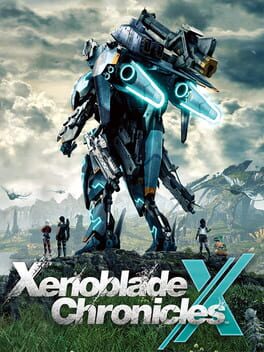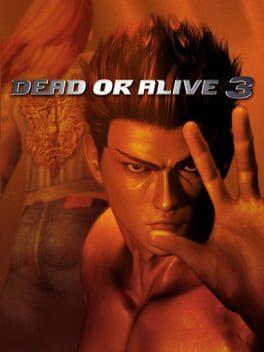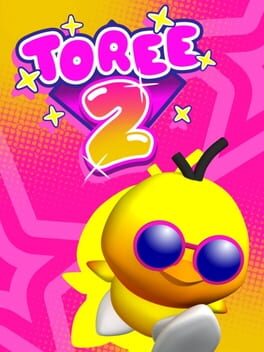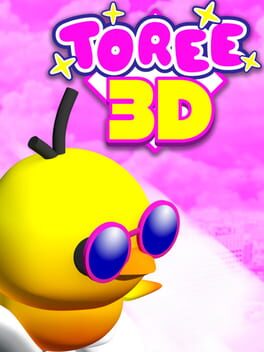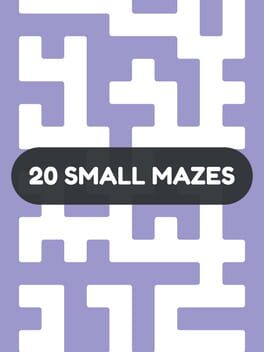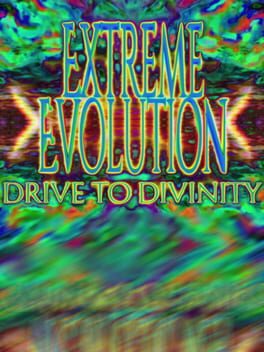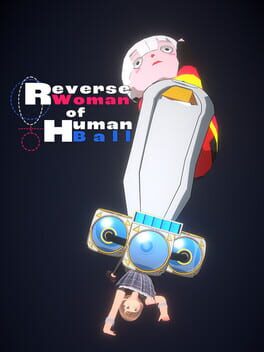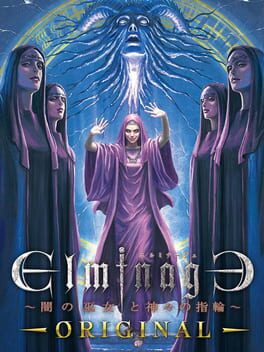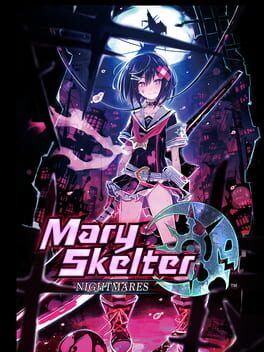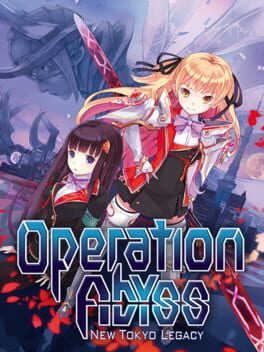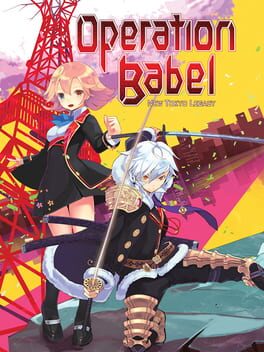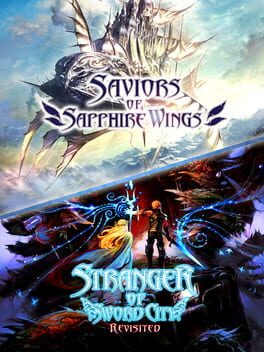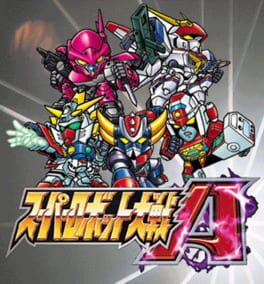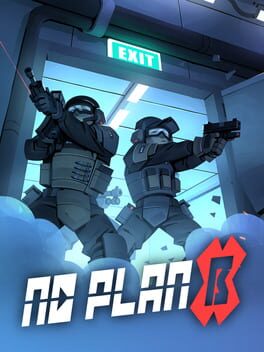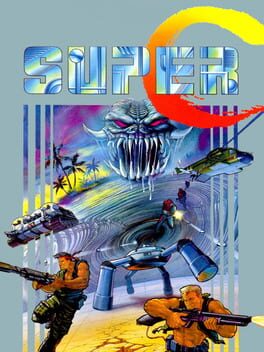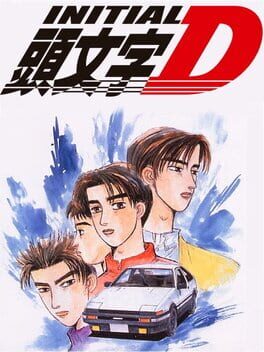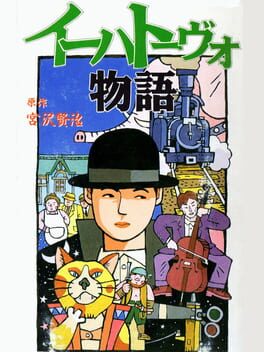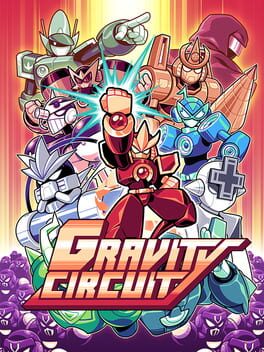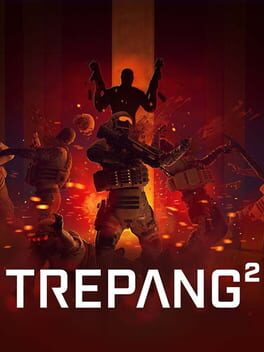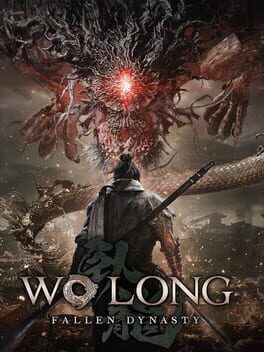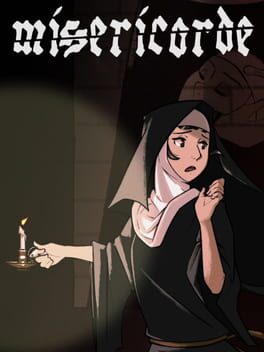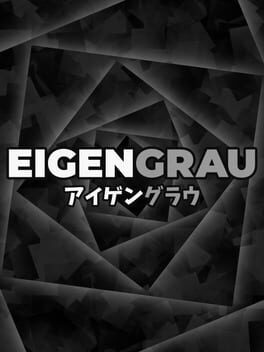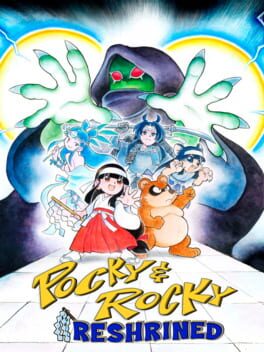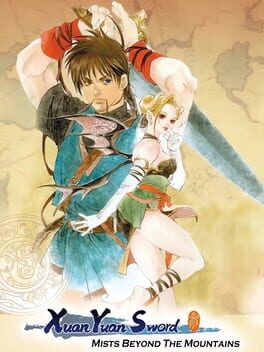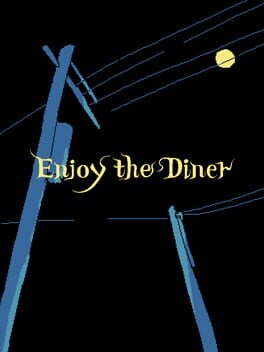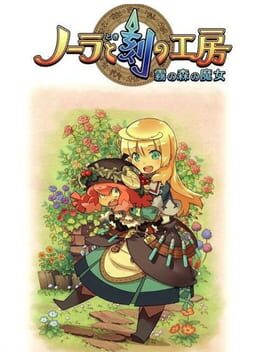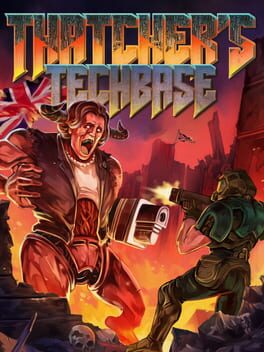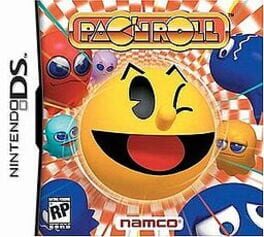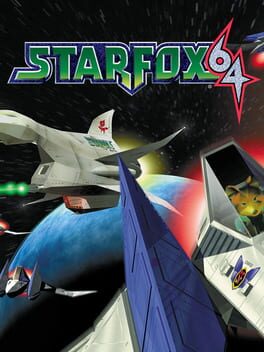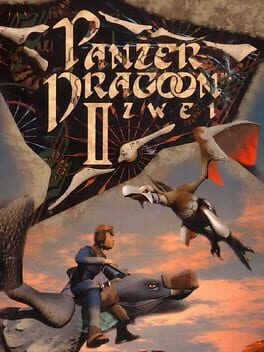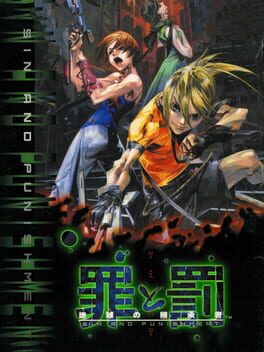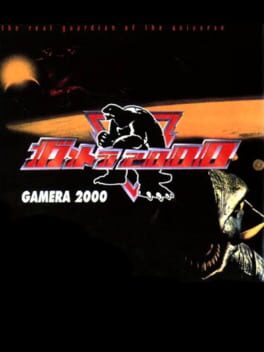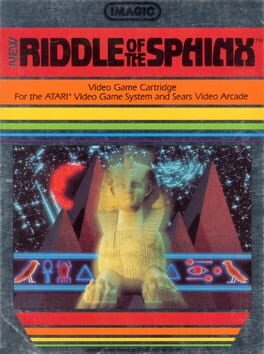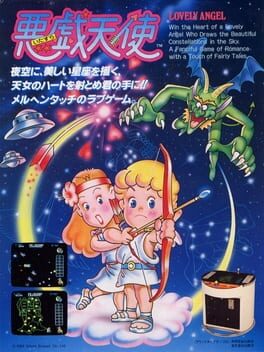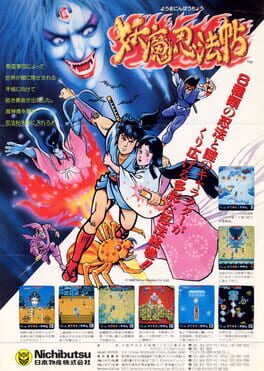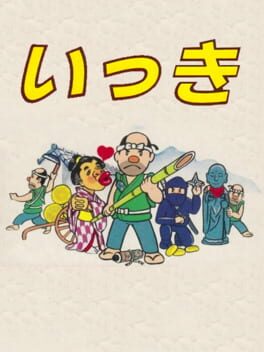coffeentacos
134 reviews liked by coffeentacos
Etrian Odyssey
2007
1. I played the 'Untold' 3DS remake first, which informed how I approached the game. I was liberal with guides, feeling "well, I've already done all this, so it's okay". I hope I didn't damage the intended difficulty, which I thought was as challenging my Untold playthrough on 'Standard'.
2. My favourite part of Etrian Odyssey - any version - is drawing the map, no contest. It's beyond satisfying seeing an empty map grow into a full one, and empowering to use what you've drawn as a resource in exploration. A fun part of going backwards to this version, though, was how much more limited your mapping tools are! There's only a couple icons, and you can't paint the floor tiles different colours, or draw paths to auto-walk down. I say 'fun' because I found this a fun challenge! I used the limited tool set to communicate the floor's specific mechanics in more creative and concise ways. Ironically, the restrictions made my maps more personal!
3. The lack of 'Floor Jump' was the biggest change coming from 'Untold'. (You enter the dungeon at any floor you've explored instead of a checkpoint every five floors.) I like the game more without it! Clambering down to where I was last made the labyrinth bigger, fighting to get there felt stressful, and learning what paths to take made it more familiar. Fast travel makes for a less interesting experience.
4. Respect having the items you need for pub side quests so painfully scarce. Farming them typically gets a level up, so I never needed to grind them out. It's pretty elegant - though frustrating in the moment.
5. Having to think about how my characters react to the story was fun - a lot different from Untold, which has a premade cast and cutscenes. My imagination never ran that wild, but getting to think up little scenarios for my fellows was cute. That said, I did regret basing them on my actual friends. I was always worried about them acting out of character...
2. My favourite part of Etrian Odyssey - any version - is drawing the map, no contest. It's beyond satisfying seeing an empty map grow into a full one, and empowering to use what you've drawn as a resource in exploration. A fun part of going backwards to this version, though, was how much more limited your mapping tools are! There's only a couple icons, and you can't paint the floor tiles different colours, or draw paths to auto-walk down. I say 'fun' because I found this a fun challenge! I used the limited tool set to communicate the floor's specific mechanics in more creative and concise ways. Ironically, the restrictions made my maps more personal!
3. The lack of 'Floor Jump' was the biggest change coming from 'Untold'. (You enter the dungeon at any floor you've explored instead of a checkpoint every five floors.) I like the game more without it! Clambering down to where I was last made the labyrinth bigger, fighting to get there felt stressful, and learning what paths to take made it more familiar. Fast travel makes for a less interesting experience.
4. Respect having the items you need for pub side quests so painfully scarce. Farming them typically gets a level up, so I never needed to grind them out. It's pretty elegant - though frustrating in the moment.
5. Having to think about how my characters react to the story was fun - a lot different from Untold, which has a premade cast and cutscenes. My imagination never ran that wild, but getting to think up little scenarios for my fellows was cute. That said, I did regret basing them on my actual friends. I was always worried about them acting out of character...
Bad End Theater
2021
Wanted to play something short and cute in the VN space and this definitely delivered. It's not really much of a puzzle game as it claims, but it doesn't need to be. It's cute and short enough for a single session and that's all it needs to be.
1. Awful as it is, I doubt I could have finished without the shutdown deadline. Xenoblade X took me 180 hours over two years - 30 with COVID in 2022, and 150 to get ahead of the shutdown in 2024. Maybe it was a good thing!!
2. I got really stuck in Chapter 10. I felt I had intuited combat, so I looked online for some advice. I realised I had absolutely no idea how the self-healing mechanic worked. It's easy to be annoyed when you have a moment like that, but I like it.
I don't understand why I win encounters, because the game doesn't want to tell me that. What I do understand is what to do to win, which is what the game actually taught me. Because I never managed to kill Xenoblade X, it feels more alive. Fights could always go either way, so I try my best to survive with the tools I have. I think that feeling is perfect for this game. I definitely think it's why I kept feeling tense in fights for 180 hours.
3. I was disappointed that after your mech starts flying about 120 hours in, the area themes all get replaced by a jaunty Sawano track. But I realise now that the Skell flying theme was actually a valiant, self-sacrificing hero, protecting the area themes from being zoned out by the player after 180 hours. Thank you, Monolith. Thank you, Sawano.
4. It's fascinating how good the side missions & affinity missions are. Xenoblade X's narrative is about a merc exploring a whole different planet, taking on the wildest sicko-inclined jobs, and spending time with their cool friends while nasty things happen to them. Xenoblade X is not about the main story, which is about 5% of the runtime. The moment you realise and appreciate that, you recognise how great it is to be engaging in X-Files nightmares through the cockpit of your giant mech.
5. Worth noting you only enter that cockpit after spending 60 hours on the ground earning your license. This is the true face of pinnacle.
2. I got really stuck in Chapter 10. I felt I had intuited combat, so I looked online for some advice. I realised I had absolutely no idea how the self-healing mechanic worked. It's easy to be annoyed when you have a moment like that, but I like it.
I don't understand why I win encounters, because the game doesn't want to tell me that. What I do understand is what to do to win, which is what the game actually taught me. Because I never managed to kill Xenoblade X, it feels more alive. Fights could always go either way, so I try my best to survive with the tools I have. I think that feeling is perfect for this game. I definitely think it's why I kept feeling tense in fights for 180 hours.
3. I was disappointed that after your mech starts flying about 120 hours in, the area themes all get replaced by a jaunty Sawano track. But I realise now that the Skell flying theme was actually a valiant, self-sacrificing hero, protecting the area themes from being zoned out by the player after 180 hours. Thank you, Monolith. Thank you, Sawano.
4. It's fascinating how good the side missions & affinity missions are. Xenoblade X's narrative is about a merc exploring a whole different planet, taking on the wildest sicko-inclined jobs, and spending time with their cool friends while nasty things happen to them. Xenoblade X is not about the main story, which is about 5% of the runtime. The moment you realise and appreciate that, you recognise how great it is to be engaging in X-Files nightmares through the cockpit of your giant mech.
5. Worth noting you only enter that cockpit after spending 60 hours on the ground earning your license. This is the true face of pinnacle.
Jazz Jackrabbit
1994
Loved this game as a kid but the level design is really rough and the game is too zoomed in on Jazz for the speed to really work at all. Early levels are fine but the game relies on cheap shots and leaps of faith later on to make the game difficult instead of doing anything interesting. Jazz 2 is a massive improvement in every way. Even the free Holiday Hare episodes have better level design
Cirnozardry
2014
Cirnozardry seems to be all but completely unknown in the West. I think that’s a real shame: it’s a solid game with some of the best and most consistent dungeon design I’ve ever seen, easily beating out the vast majority of commercial DRPGs.
I always find it hard to put dungeon design into words, but if you’re familiar with the genre, you’ll have experienced games that get it and games that don’t. Cirnozardry gets it. Each floor is cohesive yet internally varied, never giving way to cacophony or formula; each floor is big enough to explore and get lost in, but not so large that it becomes a slog or runs out of ideas (hello, Mary Skelter). Unlike many DRPGs, including most Wizardry clones, floors are also quite dense: events and treasure chests (usually with good items; eat your heart out, Experience Inc.!) are everywhere. It’s reminiscent of Etrian Odyssey in that way.
The dungeon is always challenging and often mean, but almost never unfair: a one-way door on the first floor drops you into the game’s first Dark Zone*, but if you get lost, there are multiple ways back to the light; there are secret doors aplenty and a near-mandatory one on the third floor, but they follow the symmetry principle and an attentive player should be able to find nearly all of them. With neither an ingame map nor a way to see your coordinates (something even the original Wizardry had!), silent teleporters feel a bit unfair, but they aren’t overused.
What’s more, the variety between floors is excellent. 2F is a tricky maze; 3F is a monster apartment complex; 4F is a brutal mapping puzzle that is mercifully optional (if you found the hidden door on the last floor, at least). Claustrophobic 7F gives way to wide-open 8F.
The combat system is unremarkable (if you’ve ever played an RPG Maker 2000 game before, you know what to expect), but the playable characters are well-designed: Cirnozardry excels at differentiation within a niche. For example, opening treasure chests without triggering traps requires a thief-type character in the party, of which two are available from the start. The first, Nazrin, is a terrible combatant with awful skills and poor equipment options, but with a completely unique ability: an overhead view of the dungeon. The other, Kogasa, lacks this ability but has better stats, helpful in-combat skills, and the ability to equip heavy weapons and armor: in short, she can actually contribute in combat. In this way, Cirnozardry throws a bone to people who struggle with mapping without giving them a free lunch.
When it comes to presentation, Cirnozardry takes a turn for the strange. Wireframe dungeons give way to the usual RPGMaker battle screen and, occasionally, overhead-view cutscenes. Sprites are a mix of WolfRPG resources and assets ripped from other games. When you kill an enemy, they play the player death sound from Touhou; each floor’s BGM is taken from a different Touhou stage. An unseen audience cheers when you find a rare treasure chest and gasps when you trigger a trap or fall down a pit. This strange collage works extremely well in practice if you can tolerate a little bit of clash.
So Cirnozardry is an excellent game. But there’s one caveat: it’s very, very punishing. Most obviously, there’s absolutely no ingame map; you have to draw your own. Floor sizes and starting locations are inconsistent, so I can’t recommend paper—you’re liable to go over the edge of the sheet. I used Graph Paper, a Japanese tool with a functional machine-translated English release whose name makes it almost impossible to Google in English; it’s linked at the bottom of this post.
The economy can be brutal. Reviving characters is incredibly expensive; your income never outscales the fees (imagine early-game Wizardry 1 if it were the entire game), nor does any character learn a resurrection spell. This is compounded by an unfortunate lack of money: random encounters drop no gold and treasure chests from respawning fixed ones drop gold or an item, not both (and when they drop gold, it’s always a bizarrely small quantity). The only way to stay afloat is to aggressively sell items, which can feel bad if you’re the sort of person who likes to keep one copy of anything.
This also intensifies the strange dichotomy of hallway battles and room battles. Without the pittance of gold afforded them in Wizardry and the like, hallway battles feel like a complete waste of resources and effort. So fine, seek out room battles—except that a handful of floors, most egregiously 5F, have large areas with almost none of them. Exploring these areas feels unrewarding, and if you keep dying, you might have to take a break to grind rooms to afford Eirin’s revival fees.
This next part contains spoilers for the last stretch of the game:
After ten floors of relatively normal exploration, you take on the Shining Needle Castle, a brutal three-floor gauntlet with a Final Fantasy VI-like multi-party system. Here’s where the game asks you to form a second team and use eight of its eleven characters, and where you become very grateful that it has two healers. This doesn’t entail a grind—characters not in the party always receive full XP from battle, and, unless you’ve gone crazy with the sell button, there should be enough gear to go around—but if you’ve used the same four characters for most of the game, you’re going to have to experiment with the ones you haven’t.
Like in FFVI, you can swap between parties with a button press, and progressing often requires one party to step on a switch that lifts a gate somewhere else. Unlike in FFVI, this takes place in a nightmare labyrinth that’s tricky even to map. Eventually, you’ll unlock a switch that opens a shortcut from 1F to 2F, followed by one that opens 3F for business.
3F offers a different sort of challenge. It’s small and easy to explore—the stairs to the final boss are straight down south, and the switch that opens them for business is a few steps north—and it doesn’t have any real two-party switch puzzles. Instead, it hosts five minibosses, each of whom grants the final boss a special skill and respawns whenever you enter the dungeon. Naturally, a party that fights all the minibosses won’t be in any shape to take on the final boss, so you once again have to use both parties: one to do the prepwork, the other to fight the final boss with its resources intact. (A conveniently-placed save crystal means you don’t need to redo the minibosses every attempt.)
Or, of course, you can take on the final boss with its skills intact. That’s what I did, and it wasn’t terribly hard; I beat it on my second try after taking too many level-draining (!) attacks at the start of the first. The game gives you more than enough tools to make it work.
I always find it hard to put dungeon design into words, but if you’re familiar with the genre, you’ll have experienced games that get it and games that don’t. Cirnozardry gets it. Each floor is cohesive yet internally varied, never giving way to cacophony or formula; each floor is big enough to explore and get lost in, but not so large that it becomes a slog or runs out of ideas (hello, Mary Skelter). Unlike many DRPGs, including most Wizardry clones, floors are also quite dense: events and treasure chests (usually with good items; eat your heart out, Experience Inc.!) are everywhere. It’s reminiscent of Etrian Odyssey in that way.
The dungeon is always challenging and often mean, but almost never unfair: a one-way door on the first floor drops you into the game’s first Dark Zone*, but if you get lost, there are multiple ways back to the light; there are secret doors aplenty and a near-mandatory one on the third floor, but they follow the symmetry principle and an attentive player should be able to find nearly all of them. With neither an ingame map nor a way to see your coordinates (something even the original Wizardry had!), silent teleporters feel a bit unfair, but they aren’t overused.
What’s more, the variety between floors is excellent. 2F is a tricky maze; 3F is a monster apartment complex; 4F is a brutal mapping puzzle that is mercifully optional (if you found the hidden door on the last floor, at least). Claustrophobic 7F gives way to wide-open 8F.
The combat system is unremarkable (if you’ve ever played an RPG Maker 2000 game before, you know what to expect), but the playable characters are well-designed: Cirnozardry excels at differentiation within a niche. For example, opening treasure chests without triggering traps requires a thief-type character in the party, of which two are available from the start. The first, Nazrin, is a terrible combatant with awful skills and poor equipment options, but with a completely unique ability: an overhead view of the dungeon. The other, Kogasa, lacks this ability but has better stats, helpful in-combat skills, and the ability to equip heavy weapons and armor: in short, she can actually contribute in combat. In this way, Cirnozardry throws a bone to people who struggle with mapping without giving them a free lunch.
When it comes to presentation, Cirnozardry takes a turn for the strange. Wireframe dungeons give way to the usual RPGMaker battle screen and, occasionally, overhead-view cutscenes. Sprites are a mix of WolfRPG resources and assets ripped from other games. When you kill an enemy, they play the player death sound from Touhou; each floor’s BGM is taken from a different Touhou stage. An unseen audience cheers when you find a rare treasure chest and gasps when you trigger a trap or fall down a pit. This strange collage works extremely well in practice if you can tolerate a little bit of clash.
So Cirnozardry is an excellent game. But there’s one caveat: it’s very, very punishing. Most obviously, there’s absolutely no ingame map; you have to draw your own. Floor sizes and starting locations are inconsistent, so I can’t recommend paper—you’re liable to go over the edge of the sheet. I used Graph Paper, a Japanese tool with a functional machine-translated English release whose name makes it almost impossible to Google in English; it’s linked at the bottom of this post.
The economy can be brutal. Reviving characters is incredibly expensive; your income never outscales the fees (imagine early-game Wizardry 1 if it were the entire game), nor does any character learn a resurrection spell. This is compounded by an unfortunate lack of money: random encounters drop no gold and treasure chests from respawning fixed ones drop gold or an item, not both (and when they drop gold, it’s always a bizarrely small quantity). The only way to stay afloat is to aggressively sell items, which can feel bad if you’re the sort of person who likes to keep one copy of anything.
This also intensifies the strange dichotomy of hallway battles and room battles. Without the pittance of gold afforded them in Wizardry and the like, hallway battles feel like a complete waste of resources and effort. So fine, seek out room battles—except that a handful of floors, most egregiously 5F, have large areas with almost none of them. Exploring these areas feels unrewarding, and if you keep dying, you might have to take a break to grind rooms to afford Eirin’s revival fees.
This next part contains spoilers for the last stretch of the game:
After ten floors of relatively normal exploration, you take on the Shining Needle Castle, a brutal three-floor gauntlet with a Final Fantasy VI-like multi-party system. Here’s where the game asks you to form a second team and use eight of its eleven characters, and where you become very grateful that it has two healers. This doesn’t entail a grind—characters not in the party always receive full XP from battle, and, unless you’ve gone crazy with the sell button, there should be enough gear to go around—but if you’ve used the same four characters for most of the game, you’re going to have to experiment with the ones you haven’t.
Like in FFVI, you can swap between parties with a button press, and progressing often requires one party to step on a switch that lifts a gate somewhere else. Unlike in FFVI, this takes place in a nightmare labyrinth that’s tricky even to map. Eventually, you’ll unlock a switch that opens a shortcut from 1F to 2F, followed by one that opens 3F for business.
3F offers a different sort of challenge. It’s small and easy to explore—the stairs to the final boss are straight down south, and the switch that opens them for business is a few steps north—and it doesn’t have any real two-party switch puzzles. Instead, it hosts five minibosses, each of whom grants the final boss a special skill and respawns whenever you enter the dungeon. Naturally, a party that fights all the minibosses won’t be in any shape to take on the final boss, so you once again have to use both parties: one to do the prepwork, the other to fight the final boss with its resources intact. (A conveniently-placed save crystal means you don’t need to redo the minibosses every attempt.)
Or, of course, you can take on the final boss with its skills intact. That’s what I did, and it wasn’t terribly hard; I beat it on my second try after taking too many level-draining (!) attacks at the start of the first. The game gives you more than enough tools to make it work.
A Wizardry clone that modernizes the traditional systems and gives them a beautiful coat of paint, but utterly fails at dungeon and item design. Also hampered by lackluster dungeon graphics past the first dungeon and a weird difficulty curve.
Nearly every non-spellcaster class possesses a variety of in-battle skills, giving attackers more to do than hack away every turn forever. Each class has a niche: Warriors are tanks with extremely strong single-target physical attacks but no other options; Samurai have excellent damage output but poor defense for a frontliner; Monks have a grab bag of special attacks but no strong single-target attacks; and so on. Besides ensuring niche protection, this encourages you to multi-class. Unlike in Wizardry, multi-classing is a fully functional system that works about how you'd expect it to, though halflings' and half-onis' wacky statlines make it hard for them to meet the prerequisites of some classes.
Other key modernizations: fixed encounters are visible as pools of fog; item information is fully exposed; level drain and aging (but not, surprisingly, permadeath!) are out; ironman mode is a toggle rather than an obligation. Unfortunately, the game's big gimmick, max-HP-reducing attacks, doesn't really work: the only way to restore your max HP is to return to town, and there's rarely a compelling reason not to return to town, so when you get hit with one (which is pretty rare), you just return to town.
The art is excellent. Enemies look cool; the character portraits, while few, are good; the UI is fairly stylish (if you can excuse the inexplicable bloom). Dungeon graphics are a bit weaker: the first major dungeon is a gorgeous blend of 2D and 3D, but everything after looks like PS2 textures as seen through a crappy black-and-white filter. The music is outstanding, but the battle theme's lead-in is longer than the average encounter; it wore on me before the game was out.
The big problem: the dungeons are really boring. Like, less interesting than the ones in Wizardry 1, the decades-old game that founded the genre. The penultimate dungeon was decent aside from some truly heinous mandatory secret doors, but it takes maybe eight hours to get there, and then the final dungeon sucks again (mostly because it's incredibly short, leaving you to grind to fight the final boss).
Equipment drops are unvaried and largely boring until the final dungeon, which hands out special items like candy. A DRPG with boring items is almost as bad as a DRPG with boring dungeons, and this game is both.
Also, there were a few large difficulty spikes. The first, a quartet of heavy-hitting minibosses partway through the second dungeon, made me drop the game until I came back and spent an hour grinding. The second, a pair of even heavier-hitting minibosses at the start of the final dungeon, was maybe half that. The last, the final boss whose AoE attacks can take out endgame-level thieves and wizards in a single round, took a few hours. The common thread here is that there isn't really any way around it: if you don't have enough HP, you gotta grind (and probably reclass your characters so they can level faster and get more HP). I'm not particularly enthused about spending four or five hours in a 15-hour game grinding, especially when said game costs $40.
The localization has some small technical issues, but it reads well.
Overall verdict: absolutely not worth your time or money, but a sequel with better dungeon design might be.
Nearly every non-spellcaster class possesses a variety of in-battle skills, giving attackers more to do than hack away every turn forever. Each class has a niche: Warriors are tanks with extremely strong single-target physical attacks but no other options; Samurai have excellent damage output but poor defense for a frontliner; Monks have a grab bag of special attacks but no strong single-target attacks; and so on. Besides ensuring niche protection, this encourages you to multi-class. Unlike in Wizardry, multi-classing is a fully functional system that works about how you'd expect it to, though halflings' and half-onis' wacky statlines make it hard for them to meet the prerequisites of some classes.
Other key modernizations: fixed encounters are visible as pools of fog; item information is fully exposed; level drain and aging (but not, surprisingly, permadeath!) are out; ironman mode is a toggle rather than an obligation. Unfortunately, the game's big gimmick, max-HP-reducing attacks, doesn't really work: the only way to restore your max HP is to return to town, and there's rarely a compelling reason not to return to town, so when you get hit with one (which is pretty rare), you just return to town.
The art is excellent. Enemies look cool; the character portraits, while few, are good; the UI is fairly stylish (if you can excuse the inexplicable bloom). Dungeon graphics are a bit weaker: the first major dungeon is a gorgeous blend of 2D and 3D, but everything after looks like PS2 textures as seen through a crappy black-and-white filter. The music is outstanding, but the battle theme's lead-in is longer than the average encounter; it wore on me before the game was out.
The big problem: the dungeons are really boring. Like, less interesting than the ones in Wizardry 1, the decades-old game that founded the genre. The penultimate dungeon was decent aside from some truly heinous mandatory secret doors, but it takes maybe eight hours to get there, and then the final dungeon sucks again (mostly because it's incredibly short, leaving you to grind to fight the final boss).
Equipment drops are unvaried and largely boring until the final dungeon, which hands out special items like candy. A DRPG with boring items is almost as bad as a DRPG with boring dungeons, and this game is both.
Also, there were a few large difficulty spikes. The first, a quartet of heavy-hitting minibosses partway through the second dungeon, made me drop the game until I came back and spent an hour grinding. The second, a pair of even heavier-hitting minibosses at the start of the final dungeon, was maybe half that. The last, the final boss whose AoE attacks can take out endgame-level thieves and wizards in a single round, took a few hours. The common thread here is that there isn't really any way around it: if you don't have enough HP, you gotta grind (and probably reclass your characters so they can level faster and get more HP). I'm not particularly enthused about spending four or five hours in a 15-hour game grinding, especially when said game costs $40.
The localization has some small technical issues, but it reads well.
Overall verdict: absolutely not worth your time or money, but a sequel with better dungeon design might be.
Dead or Alive 3
2001
Cool game, though other than the graphics I can't tell what 3 adds to the table. It feels like Dead or Alive 2 again, but on the Xbox. That means it's good since I like DoA2, so I'm not complaining too much.
Toree 2
2021
It’s good.
Toree 3D
2021
It’s okay.
20 Small Mazes
2024
They are good mazes.
8 lists liked by coffeentacos
by tombo |
95 Games
by Elephant_Parade |
19 Games
by Cold_Comfort |
26 Games
by siegarettes |
12 Games
by Funbil |
28 Games
by Minish |
25 Games
by Funbil |
75 Games
by Funbil |
88 Games
